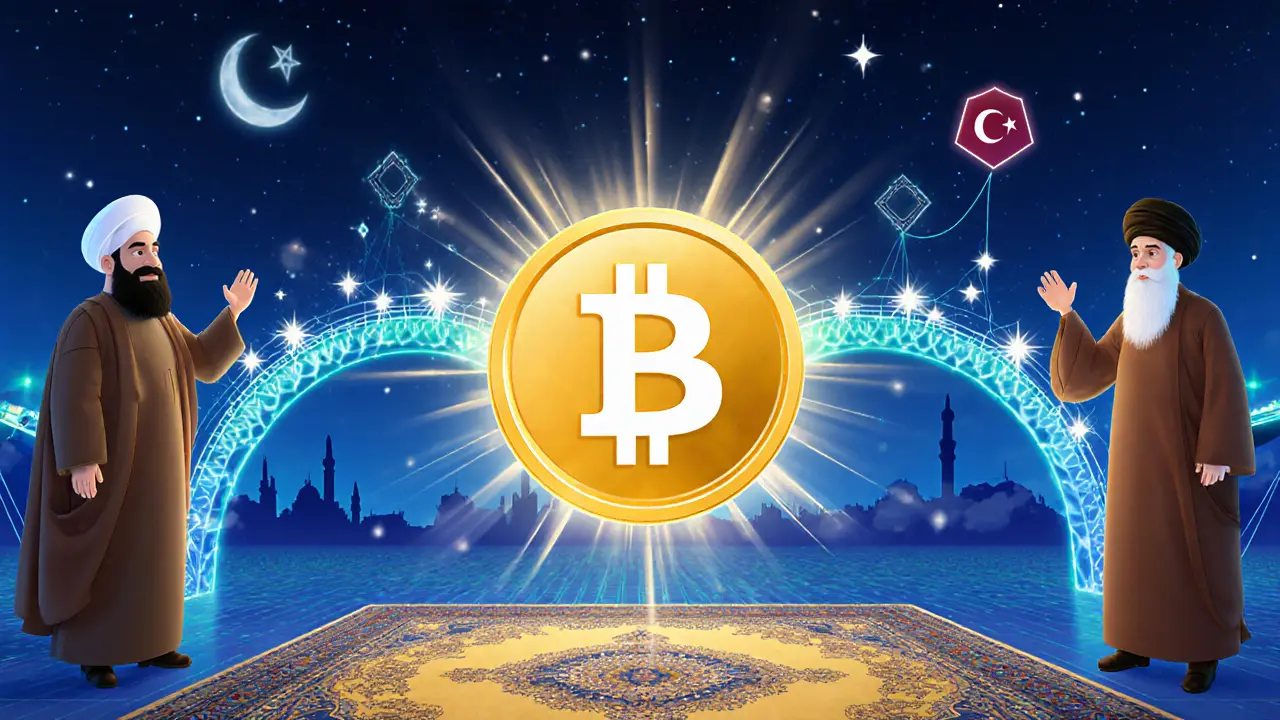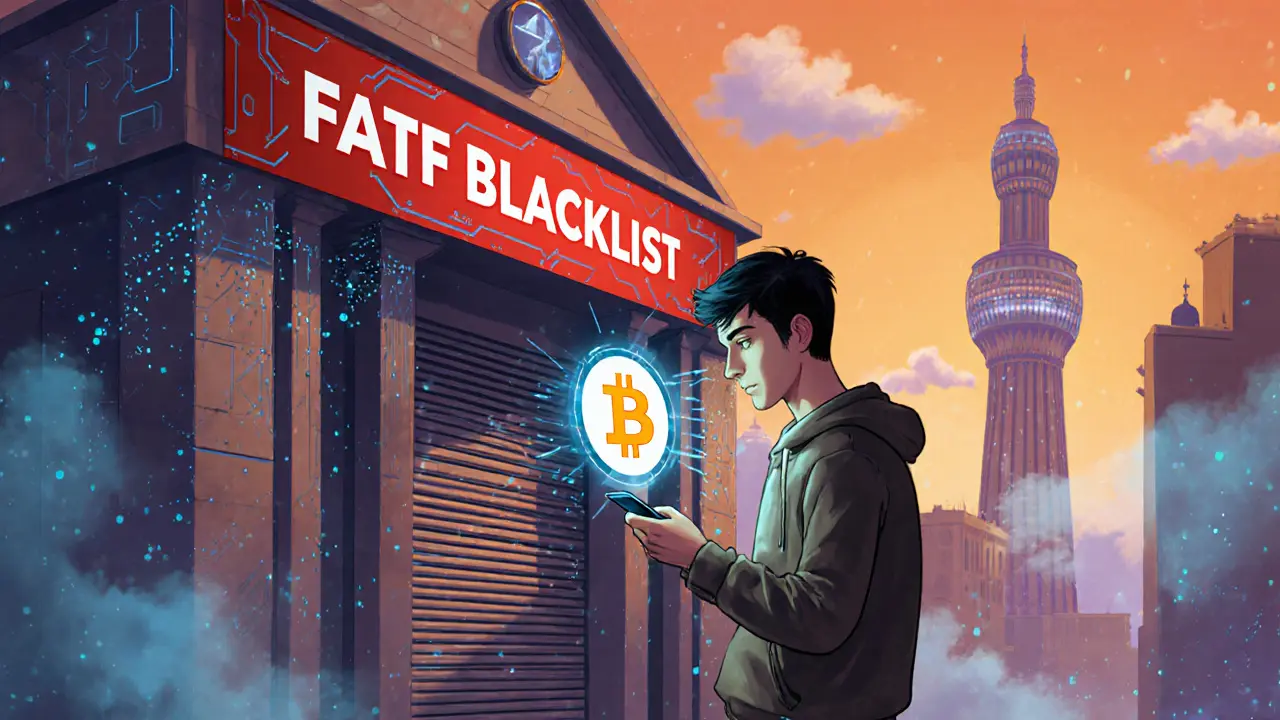Iranian Crypto Transaction Cost Calculator
Estimate Your Transaction Costs
Transaction Estimate
Estimated Cost: $0.00
Premium Rate:
Success Rate: 0%
Method Risks:
When studying the FATF blacklist is a list of jurisdictions flagged by the Financial Action Task Force for severe AML/CFT deficiencies, the fallout for Iran is immediate and profound. Since its placement in October2019, the designation has forced Iranian citizens to abandon traditional banking channels and turn to digital assets for any cross‑border need. This article breaks down why the blacklist matters, how it reshapes everyday crypto activity, and what users can realistically do to stay afloat.
Why the FATF blacklist matters
The FATF’s "Call for Action" isn’t a casual notice; it triggers mandatory enhanced‑due‑diligence, correspondent‑banking bans, and transaction‑monitoring mandates for every global financial institution that touches the listed jurisdiction. In practice, this means the SWIFT network, the backbone of international transfers, is effectively shut to Iranian banks. The ripple effect is a near‑total loss of access to conventional payment rails, pushing individuals, small businesses, and even state‑linked entities toward alternatives that can slip under the radar.
Banking isolation drives crypto demand
World Bank data shows Iran’s correspondent‑banking relationships fell from 28 in 2018 to just 3 by mid‑2025. With fewer channels to move fiat abroad, the country witnessed a 63% surge in transaction volume on domestic crypto exchanges between Q12024 and Q42024, according to Chainalysis. Monthly outflows crossed $480million by December2024, up from $290million at the start of the year. The dominant asset is Bitcoin, which captured 78% of all sanctioned‑jurisdiction crypto traffic in 2024 because of its robust censorship‑resistance.
Key platforms and how they’re affected
Iranian users juggle between domestic exchanges such as Nobitex and offshore giants like Binance. Domestic platforms operate under a “halal blockchain” model that blocks cross‑border transfers, forcing many traders to seek offshore services. Yet global exchanges enforce the FATF travel‑rule, demanding identity verification that clashes with Iranian anonymity laws. In practice, this tension leads to account freezes-about 33% of Iranian Binance users reported freezes after a few sub‑$1,500 transactions in August2025.
Practical workarounds for everyday users
Most Iranians have migrated to non‑custodial wallets (Trust Wallet, Exodus) because they avoid KYC bottlenecks. Data shows 92% of Iranian crypto moves originate from mobile wallets, and the average transaction size dropped to under $1,500 to stay below reporting thresholds. Peer‑to‑peer (P2P) networks on LocalBitcoins or Telegram‑based groups achieve roughly 78% success rates, albeit with a 22% premium over market prices. Decentralized exchanges (DEXs) such as PancakeSwap offer lower fees but suffer from liquidity gaps, delivering a 63% success rate and an average 15% slippage.
Emerging local solutions
In August2025 the Central Bank of Iran piloted a “Halal Stablecoin” (HSC) pegged to gold. Within the first month, 4.2million users moved $280million on the new chain, but the token remains isolated from global liquidity pools because FATF‑enabled banks refuse to process it. Meanwhile, community‑driven projects like the "HalalChain" P2P network claim atomic swaps that can move BTC to Turkey in under 20minutes without KYC-though users pay a 15‑20% premium for speed and anonymity.
Risks, compliance, and real‑world pain points
Beyond exchange freezes, Iranian users face legal exposure. FATF’s stringent reporting requirements force banks worldwide to flag any transaction involving a sanctioned jurisdiction. In September2025, a UAE‑based exchange suspended 317 Iranian accounts, resulting in a collective $4.1million loss. On the technical side, many rely on GitHub‑hosted tools like “IranCryptoKit” to bypass state firewalls; however, 37% of users reported security compromises due to unvetted code.

Future outlook and policy tensions
FATF’s latest risk assessment predicts that crypto adoption in Iran will exceed 25million users by 2027-roughly 60% of the adult population. Yet analysts such as Dr. Emad Kiyaei warn that continued blacklist pressure could trigger a liquidity collapse as exchanges retreat from Iranian customers. The paradox is clear: the blacklist, intended to curb illicit financing, has turned crypto into Iran’s de‑facto international payment system, with 93% of surveyed users saying they would double crypto usage if sanctions persist through 2026.
Key takeaways
- The FATF blacklist cuts off Iran from traditional banking, making crypto the primary channel for cross‑border payments.
- Bitcoin dominates Iranian crypto activity, but privacy coins and stablecoins are gaining niche traction.
- Domestic exchanges are limited; users rely heavily on offshore platforms that enforce KYC, leading to frequent account freezes.
- Non‑custodial wallets, P2P markets, and emerging local stablecoins provide workarounds, though at higher costs and security risks.
- Policy outlook remains uncertain-more sanctions could deepen crypto reliance, but also threaten liquidity if exchanges pull out.
FAQ
Why does the FATF blacklist affect everyday Iranians?
The blacklist forces global banks to block or closely monitor any transaction linked to Iran. With SWIFT and most correspondent banks unavailable, people turn to crypto to send or receive money abroad.
Which cryptocurrencies are most popular in Iran?
Bitcoin leads with about 78% of sanctioned‑jurisdiction volume, followed by Ethereum (≈14%) and privacy‑focused coins like Monero (≈5%). Stablecoins and local tokens are emerging but remain a small slice.
Can I use Binance from Iran?
Technically you can access Binance, but the platform must enforce the FATF travel‑rule. Most Iranian accounts get frozen after a few small transactions, and IP‑based geofencing blocks many users outright.
What are the safest wallet options?
Non‑custodial mobile wallets such as Trust Wallet and Exodus are the most common because they don’t store user data on a server. Users must securely back up their seed phrases; loss of the phrase means total loss of funds.
Is the Iranian "Halal Stablecoin" a long‑term solution?
The stablecoin offers a locally regulated digital asset, but because FATF‑compliant banks refuse to process it, its liquidity stays confined within Iran. It aids internal transactions but can’t replace cross‑border crypto flows.
| Method | Success Rate | Typical Premium | Key Risks |
|---|---|---|---|
| Domestic CEX (e.g., Nobitex) | ≈55% | Low (≤5%) | Cross‑border transfers blocked; government surveillance |
| Offshore CEX (e.g., Binance) | ≈68% | Medium (10‑15%) | Account freezes, KYC exposure, travel‑rule compliance |
| P2P Platforms (LocalBitcoins, Telegram groups) | ≈78% | High (20‑22%) | Counter‑party fraud, price volatility |
| DEXs (PancakeSwap, Uniswap) | ≈63% | Medium (15%) | Liquidity shortage, smart‑contract bugs |
| HalalChain atomic swaps | ≈70% | Very High (15‑20%) | Technical complexity, premium costs |




5 Comments
Ayanda Ndoni
Man, I just skimmed this and my brain hurt. So Iran’s people are stuck using crypto because banks won’t touch them? Cool. I’m just glad I don’t live there. I’d rather pay $20 in fees than deal with all this chaos.
Also, why is everyone still using Bitcoin? Isn’t that like using a flip phone in 2025?
Elliott Algarin
There’s something quietly tragic about a whole nation being forced into digital survival mode. Not because they chose it, but because the system shut the door and left them with a window.
Bitcoin isn’t just money here-it’s oxygen. And the fact that people are building their own bridges-HalalChain, atomic swaps, Telegram P2P-shows how resilient humans are when they’re not given a choice.
It’s not about evasion. It’s about existence. And that’s the real story behind the numbers.
John Murphy
92% of transactions from mobile wallets and average under $1500… that’s not just smart, that’s necessary
People are learning to move money like water-small, frequent, invisible
And the Halal Stablecoin? It’s not a solution, it’s a bandage on a bullet wound
Still, gotta respect the hustle
Zach Crandall
Let me be clear: this is not a technical issue. This is a geopolitical catastrophe dressed in blockchain jargon.
The FATF, under the guise of compliance, has weaponized financial infrastructure against civilians. Not cartels. Not terrorists. Ordinary people trying to feed their families, pay for medicine, or send money to relatives abroad.
And now we’re praising their workaround-non-custodial wallets, P2P networks-as if it’s innovation, when in reality, it’s desperation wearing a tech hoodie.
There is no moral high ground here. Only consequences.
And the worst part? The same institutions that built this system will never feel the heat.
Akinyemi Akindele Winner
Man, this whole FATF thing is just the IMF’s evil twin with a better LinkedIn profile.
Iranians turning to crypto like it’s the last bar open after the apocalypse? Iconic.
Meanwhile, the West’s banks are out here crying about ‘AML compliance’ while charging $50 to send $100 to Nigeria. Who’s the real criminal here?
HalalChain? More like HallelujahChain. And that 20% premium? That’s the tax on being poor and stubborn enough to survive.
Keep building, keep swapping, keep laughing while the suits panic. Y’all are the real fintech disruptors.